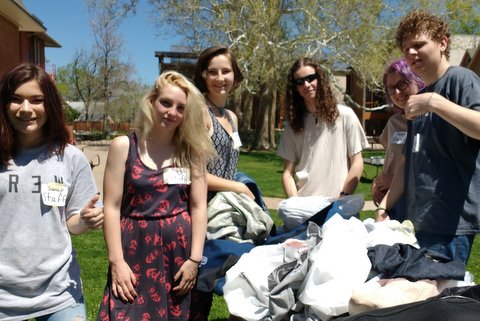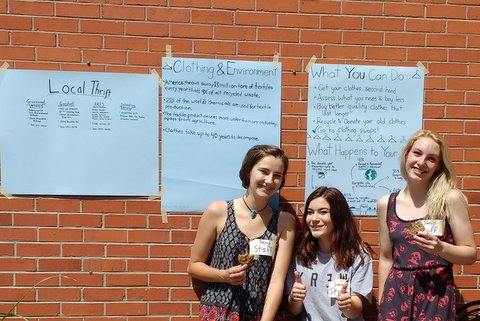
As summer heats the blocks of Boulder, Colorado, many flock to clothing stores and online shops for the newest summer trends. However, this constant closet revamping comes at an environmental cost.
Living consciously is something ingrained in most citizens of Boulder. While most establishments contain recycling and composting bins, and the car of choice is a Subaru or Prius, Boulderites rarely take notice to how clothing impacts our earth. From your shoes to your tank top, each article of clothing, unless made sustainably, is manufactured with large amounts of water in factories that spew CO2, to make clothing that contains harmful chemicals and dyes affecting the earth, air, and groundwater. 80 million new articles of clothing are purchased every year just in the U.S., and an equal amount of clothes are thrown away to make room for these new fashion purchases. When thrown away, most textiles sit in landfills for at least 200 years.
At this point, a small whisper of concern is most likely starting to enter the reader’s thoughts, because while thrift stores help recycle clothing, still so much clothing finds its way into landfills. Well, fret no longer, because a nifty way to decrease clothing waste and unnecessary disposal is a “clothing swap”. The idea is simple: bring your old clothing and swap clothes with other individuals. Whether it’s with your friends or family or city wide, it saves money and decreases the waste that clothing otherwise creates. To test out the effectiveness of this alternative waste reducer, one New Vista High School Community Adventure Program (CAP) class, took to the streets to contact clothing consumers and sponsor a clothing swap.

- Find a space: First, the class set out to find a space. One of the member’s father worked at a local university called Naropa, giving them access to their outdoor field.
- Get the word out: Next, the class created posters, a Facebook page, and invited the Boulder community to Naropa.
- Create Swap criteria: There’s no wrong way to create a swap, but there are a lot of different ways to set one up. This CAP class decided that in order to participate in the swap, you would have to bring clothing to swap with.
- Setting Up the Swap: CAP gathered seven foldable tables: one set for swap clothing to be organized; one set for women’s dresses and skirts; two sets for women’s tank tops and jackets; one for men’s tops and bottoms; and lastly, a table for accessories, kids clothing, and anything else.
- What to do with the leftover clothing: While some swaps have people take their leftover clothing home, CAP decided to find organizations to take the leftover clothing. By doing this, the clothing swap not only supported the environment, but also helped support those in need, through the different organizations.
Whether you are savvy or environmentally conscious, clothing swaps are a great way to grab new clothing, replace old outfits, and avoid adding to a wasteful cycle. Next time you need to get rid of your old outfits and replace them with new clothing, consider these resources to help our environment and recycle clothing: thrift stores, resale shops, and CLOTHING SWAPS!
For more photos from the Action Project visit photo site here!
Written by CAP teacher, Amy Atkins.

Leave a Reply